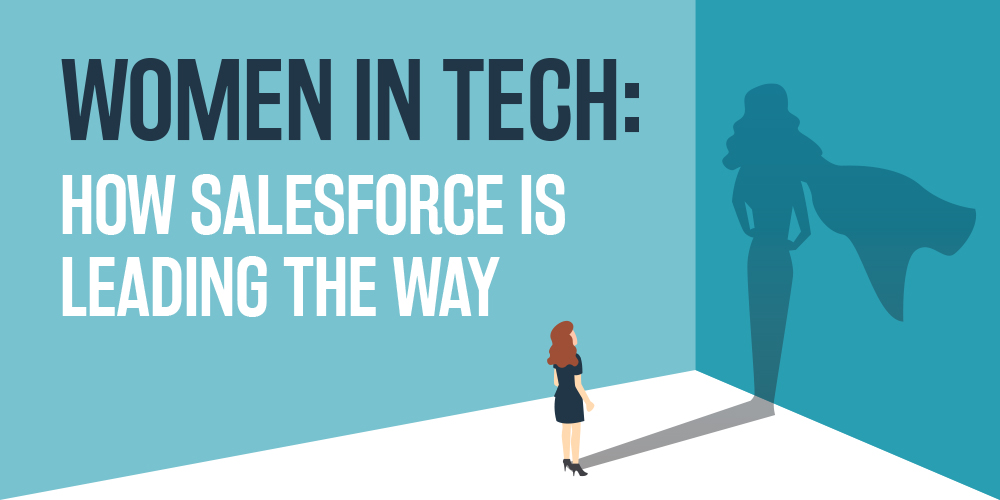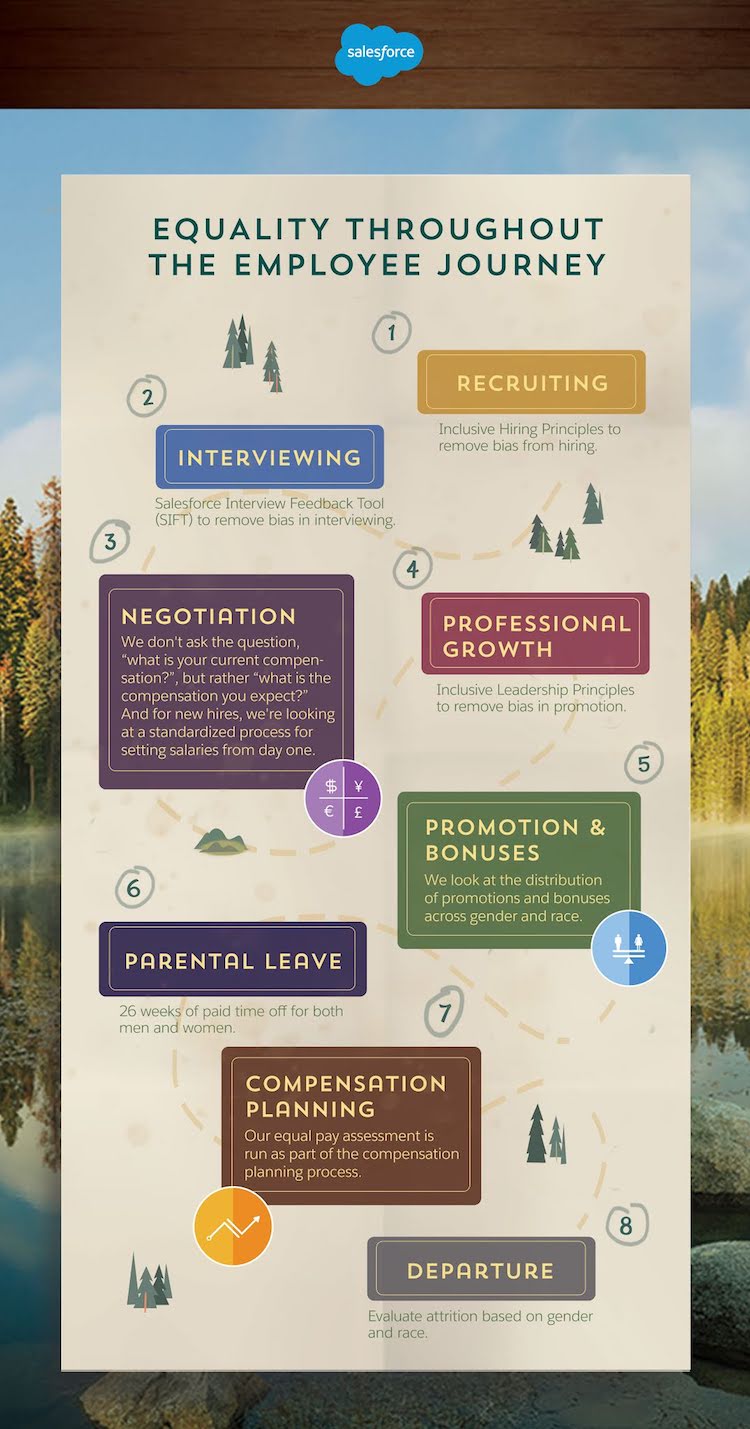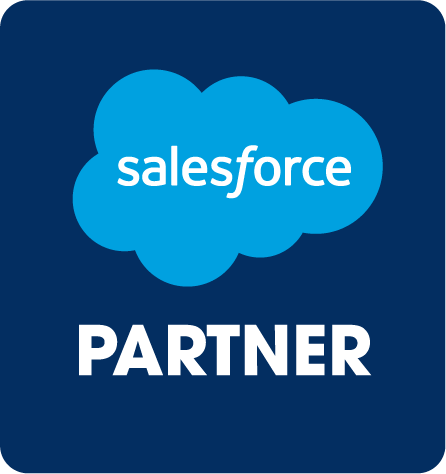
Salesforce is a champion of equality and diversity and, through its various inclusivity initiatives, events, and user groups, is leading the way for women in tech.
To learn more, we’ve spoken to a handful of inspirational women in Salesforce who are contributing to the cause—their experience and insight should paint an accurate picture of how it feels to be a woman in tech and whether Salesforce helps them feel empowered.
In 2015, a company-wide audit at Salesforce revealed a six million dollar pay disparity between the sexes. The CRM leader responded by pledging to close this pay gap, and since then has spent a total of $10.3 million to ensure equal pay for equal work; not just for women, but for all underrepresented groups and minorities.
Four years later and the company is in much better shape. Its 2019 Salesforce Equal Pay Update found that 5% of its 35,000 employees around the world required adjustments towards equal pay, and these people were predominantly men. Having these annual audits ensures pay disparity no longer goes under the radar, which is particularly important for a company like Salesforce, which hires around 9,000 people each year.
It isn’t just about pay disparity, though. The reason Salesforce has made such a push for inclusivity is that positive action is needed across the whole tech industry to ensure more women are entering tech roles.
It isn’t controversial to say there’s a stark gender bias in the tech sector; there’s both anecdotal and empirical evidence to support the claim.
Why are there such few women in tech roles?
To understand why there are such few women in tech roles, you first need to consider the presence of women in workplaces around the world, especially in leadership roles. Did you know: of the 50 CEOs hired by Fortune 500 companies in 2016, none were female. In 2018, the coveted list of Fortune 500 companies sported just 24 female CEOs. That’s less than 5%. Women are underrepresented at every level of the corporate pipeline.
For women in positions of power, there are many factors holding them back. The CrunchBase Women in Venture report revealed that in the top 100 venture capital firms, only 7% of managing directors are female.
Female-founded Inc. 500|5000 firms are also dramatically less likely to raise equity than male-founded companies, with 14.4% success for men compared to just 3.6% for women. On the contrary, venture capital firms with female partners are 2.5 times more likely to invest in companies with women on the management team.
In Forbes’ 2019 list of the world’s most-innovative leaders, only 1 person on the list of 100 was female. Gross.


Raising awareness of career opportunities for women
“There is a need to raise awareness of career opportunities in the tech sector, as many women don’t know what they are. Many people become accidental Salesforce admins and fall into the sector, as I myself experienced, and then I realised there was a career that offered more flexibility that could fit around my responsibilities as a mother.
“I’m proud to be a leader of a Salesforce consultancy supporting non-profits and to inspire and provide work experience for women starting out in the sector through the work that we do.”
Heather Black, Managing Director at Economic Change and founder of Supermums
Women in tech
One of the worst-represented industries is technology. Globally, women make up less than 20% of the tech industry. The percentage of computing occupations held by women has been declining since 1991.
At Google, women make up 32% of the workforce, and 26% of those in leadership positions are women. Only 23% of people in tech roles at Google are female. Over at Twitter, the general workforce split is close to 40/60, but only 21% of those in tech roles are women.
The retention rate for women is far lower in tech jobs too. Quitting rates average at a staggering 41% for women and 17% for men. Although the reasons behind this are complex, some attribute it to trends such as the ‘Brogrammer’.
Look around the average development floor and you’ll see a lot of male faces. Some would attribute this to a company’s hiring policy, and to some extent this is true, but the problem lies a lot deeper than recruitment.
Entry into a STEM career
The truth is that fewer girls are invested in STEM subjects (Science, Technology, Engineering, and Mathematics) at school than boys, and subsequently are less likely to pursue them as a career as a result. This isn’t through lack of ability or interest in the subject, however, but through lack of confidence.
According to research published by the UK Department for Education, which surveyed 10,000 students in England across a six-year period, just 50% of girls considered a STEM subject likely to lead to a job, compared to 69% of boys. Similarly, 60% of boys cited a STEM subject as their best, compared to just 33% of girls.
This is inconsistent with actual exam results. In fact, this study found that 68% of girls get top grades in Maths and Science, compared to 65% of boys. Despite being just as talented in STEM subjects (if not more so), there’s a belief that a career in tech isn’t viable for young women, and this must change.
In the context of our industry, perhaps the most startling finding from the study is that while 16% of boys were considering a career in computing, this was the case for just 3% of girls. It’s no wonder that the candidate market for tech roles carries such a gender bias. But what’s the demographic of the Salesforce ecosystem—does it carry the same bias?


Is an IT-related degree necessary for a Salesforce career?
“I have a degree in Business Administration and moved into Business Development, and yet I am now a CTO. We see too many businesses requiring candidates to have a Computer Science degree in order to move into a Tech-based role. Traditionally, these types of degrees are very male-dominated.
“I hope I can show that as long as you have a propensity to learn and are curious about the platform then you could be considered for a Tech role too. I have also hired people without Degrees but with valuable business experience, and have seen them to be exceptional employees. I would ask businesses to open up their criteria when hiring and look at the candidate as a whole, not just the particular degree they earned.”
Amanda Beard-Neilson, CTO at UniQuest and blogger at Diary of a Saasy Girl
The Salesforce gender split
In our 2018/19 independent Salesforce survey, 32% of overall respondents identified as female, compared to 66% of male respondents (the remainder either identified as transgender (0.4%) or did not specify their gender (1.2%). While less than a third isn’t great, this is an improvement on our previous survey, where just 28% of respondents identified as female.
This reflects the data released by Salesforce, which states the official proportion of women working in Salesforce is 31.6%.
It’s also worth analysing the sentiments of those working in the ecosystem to get a feel for how they see diversity deep in the working culture of Salesforce. The following data is from our salary survey.
Gender Diversity
Feel the company they work for is gender diverse, with different genders being equally represented.
Senior board gender balance
Do not feel that there is an equal balance of male and female representation at senior board level.
Cultural diversity
Reported that their employer has a workforce of various cultural backgrounds.
Gender identity policies
Stated their employer has clear policies to support people of different gender identities.
Available online, free of charge, today. View now.
How Salesforce supports women in tech
Corporate initiatives are one of the most powerful ways to affect major change for women in technology. Salesforce is a great example of an equality pioneer.
In 2016, Salesforce appointed its first chief equality officer, Tony Prophet. Prophet is tasked with overseeing the company’s diversity statement and instilling its four core pillars of equality:
Equal rights – Advocating for equality in the community, combating anti-LGBTQ legislation and supporting marriage equality.
Equal pay – Equal pay for equal work by conducting annual salary audits and making adjustments to close the pay gap.
Equal education – Investing in and volunteering at public schools to ensure every child receives a good education regardless of background.
Equal opportunity – Creating workplaces that are reflective of the community.
All of Salesforce’s corporate and community initiatives are measured against these four pillars. If it’s found that there’s a conflict with even one of them, Tony steps in and the company reevaluates its position.
It’s not enough to simply have a tidy-looking equality policy, though. You have to actually go out and do the work to achieve equality in the workplace. Here are a combination of Salesforce-organized and community-led initiatives that help the Salesforce ecosystem strive towards equality.
Appointing women to leadership positions
In 2019, Dame Jayne-Anne Gadhia was named Chief Executive of Salesforce UK and Ireland. With a background in banking, being one of the founders of Virgin Direct in 1995, eventually becoming Chief Executive of Virgin Money in 2007, Gadhia brings a wealth of corporate experience to the role.
Salesforce co-Chief Executives Marc Benioff and Keith Block commented: “Jayne-Anne is one of the most respected CEOs in the UK and we are thrilled to welcome her to Salesforce. With Jayne-Anne’s leadership we are well positioned to move into the next stage of growth and success for Salesforce, our customers, partners and communities.”
Raising awareness for diversity
Salesforce is active in raising awareness for diversity, be that of women or other minorities.
The company organized 37 Pride marches in 2017 and proudly marched their staff and mascots along the way. This was not only a significant financial investment but also puts them in the firing line for political debate, demonstrating the value they place on diversity. This is now an annual tradition.
Beyond this, Salesforce uses social media to spread the message of #EqualityForAll. They encourage their community, the Salesforce Ohana, to actively raise awareness of the issue. It’s a prime example of a corporate entity using their reach to spread an issue which has a direct social effect.
Eliminating the pay gap
As previously detailed. In 2015, Salesforce invested significant resource into reviewing, analyzing, and amending salaries based on a fair distribution. Their analysis looked to find unjustified pay discrepancies and correct them. Salesforce CEO Mark Benioff has pledged to make equal pay an ongoing promise.
This continued investment is a big commitment for Salesforce and shows how highly they value this initiative.
Equality throughout the employee journey
Salesforce has devised a plan to eliminate bias throughout virtually all stages of the employee journey. From the initial interview, through onboarding and training, and even on the departure of the employee.
Check out this graphic to explore how you can start to reflect Salesforce’s equality initiatives throughout your own business.
Creating an open forum
Salesforce isn’t afraid of making investments in equality. Currently, they support 9 separate diversity networks directly linking back to their brand. The first of these was the Women’s Network which is a community helping to raise awareness of Gender equality. Others include Outforce, organizers of many US Pride marches, and AbilityForce, an ability inclusion forum.
Along with raising awareness and eliminating prejudice in their organization, giving people a platform to actively curate change is a significant corporate investment.


Finding a user group that represents you
“I think it’s important that Salesforce has all different types of user groups. Not everyone will find the same group right for them. The diversity in groups allows for people of all genders, ethnicities and interests to find a group where they belong.
“WIT groups are a great safe space for women to connect with other women to learn and grow, and we absolutely need them in the ecosystem. We also need for all the WIT groups to work together. There is a lot of cross pollination between the groups, including “official” user groups and other great community groups. Ladies Be Architects, a community group that I co-lead, works very closely with WITDevs and RAD Women Code. I’m excited that there a number of WIT groups that will be putting on a day-long event the day before Dreamforce. We’re all stronger together!”
Susannah Kate St-Germain, Co-Lead at Ladies Be Architects and RAD Women Code.
What you can do for women in tech
Both as an employee or employer, there are things you can do to improve inclusion in the workplace even if you don’t have the financial backing that Salesforce does.
Spread the word
Stigma is deeply embedded into how we operate as a society and, sometimes, under-representation happens somewhat innocently, or at least subconsciously.
Conversation can eliminate ignorance. Whatever your professional platform, share insights on the changes in the industry by promoting positive change that your seen happening. Share articles with data, join the hashtags on social media and keep inclusion in the forefront of people’s minds.
The need for Women in Tech groups
“I realised I needed to shout about the opportunities and I now spend a lot of time marketing and raising awareness at events, in media etc, and I encourage other women people to do the same by sharing their story at local events and to educate more people about tech careers.
“Peer support and motivation is hugely important for women and that’s why we see the uprise of women in tech groups to help women continue to progress their career in given sectors.”
Heather Black, Managing Director at Economic Change and founder of Supermums
Be critical about your own attitudes
People are susceptible to unconscious bias. Be critical of your own attitudes at work. Diversity in technology has proven to improve design, testing and general output. A diverse work environment encourages different ways of thinking and means businesses aren’t orientated towards just a male demographic, whether that’s subconscious or not.
As an employer, ensure you help create a gender-neutral work environment. This can be achieved by creating an open company culture and avoiding gender-orientated work initiatives or social situations. For instance, are post-work events planned to cater for men and women alike? Do employee awards align with the needs of everyone on your team?
Celebrate International Women’s Day and Women in Tech Week
Some companies see diversity celebrations as tickbox exercises—use a hashtag on your social channel, change your avatar to a rainbow flag, job done. But how does this improve attitudes towards diversity in your business? Make sure you celebrate diversity days by championing the people in your company, for the benefit and education of other people in your company; not the rest of the world on social media.
It would be far more valuable to have conversations with those in your organization who are underrepresented, and measure their sentiment. After all, nobody knows the reality of the situation better than them. Maybe they personally don’t want a big deal made out of it—that’s fine, you just need to find out what the best way is to celebrate their contribution to and presence in the business, and do a good job of that.
Revamp your hiring process
During any hiring process, be critical of your own approach and check yourself for your own bias. It’s the responsibility of the interviewer to ‘do a better job of recognizing the constraints of the interview process and the dangers of prejudging candidates or looking at superficialities‘. Don’t be too quick to judge and keep in mind that different people present themselves in different ways. These points are crucial when trying to create a fair interview environment.


As an employee, you also have a responsibility to create cultural shifts within your work life. When working in a team, consider if you are attempting to represent genders equally. Beyond being a voice for women in technology and diversity as a whole, constantly check your own bias in the work environment.


